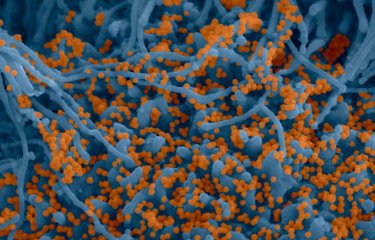-
News | 2022.12.12
A Graduate School for emerging infectious diseases
The "Emerging Infectious Diseases 1H-EID" project has received €5.9 million in funding over a five-year period. This money will be used to set up a Graduate School offering a multidisciplinary study program in the field of emerging infectious diseases. The aim is to train up future players in research and healthcare and decision-makers of tomorrow so as to better anticipate future disease...
-
News | 2023.03.06
How the parasites that cause leishmaniasis adapt to their vector hosts
In a study published on March 15, scientists demonstrate how the parasites responsible for leishmaniasis adapt to the insect they infect.
-
News | 2023.01.31
Pasteur and Carlsberg: a long history of science and friendship
When Louis Pasteur filed a patent for a beer production process, the Carlsberg brewery was the first to use it in Denmark. Jacob Christian Jacobsen, founder of Carlsberg, developed a deep respect for Pasteur. Their mutual esteem and sincere friendship stood the test of time. A symbol of their relationship is the famous painting by Léon Bonnat, produced in 1886 at the request of J.C. Jacobsen and...
-
News | 2023.01.24
Susceptibility to yeast infection depends on gut microbiota
Candida albicans is a yeast that resides naturally in the gut, but its overgrowth can be fatal for immunocompromised patients. Scientists recently demonstrated that C. albicans overgrowth was controlled by β-lactamases, enzymes produced by certain bacteria in the gut microbiota.
-
News | 2023.01.09
A theory to describe rapid brain clocks
The mechanisms used by the brain to adapt its function in relation to time are still poorly understood. Scientists from the Institut Pasteur used an artificial neural network to model the activity of the cerebellum, the brain region responsible for motor coordination and timing of cognitive operations.
-
News | 2022.09.21
Artificial intelligence: a new model of brain development sheds light on cognition
Researchers introduce a new neurocomputational model of the human brain. This model could bridge the gap in our understanding of artificial intelligence and the biological mechanisms underlying mental disorders.
-
News | 2022.11.24
From bacterial poisons to toxins: the early work of the Pasteurians
Jean-Marc Cavaillon, Honorary Professor at the Institut Pasteur, presents an overview of the discoveries that have shaped our understanding of bacterial toxins.
-
News | 2022.11.30
Elucidation of the inhibition mechanism of calmodulin, a protein that is essential for life
Calmodulin is a protein produced naturally by the body whose activity is modulated by the calcium in our cells. Scientists at the Institut Pasteur have elucidated the mechanisms of interaction between calmodulin and calmidazolium. The latter is able to effectively reduce the biological effects of calmodulin, but it is also toxic for cells. This study paves the way for the development of new, more...
-
News | 2022.11.02
Gut contractions facilitate the action of two pathogens
Scientists have assessed the influence of mechanical contractions in the gut on the invasion of two pathogens, one responsible for amebiasis and the other for shigellosis. Their research was based on 3D computational imaging and organ-on-chip technology, which enabled them to accurately reproduce the physiological characteristics of the gut on a chip no larger than a few centimeters.
-
News | 2022.10.17
Antifungal therapy: Csa6 protein, a potential target for treatment development
A team of scientists has revealed a gene (CSA6) that regulates genome stability in Candida albicans and other related fungi. The protein produced by this gene, Csa6, therefore represents a potential target for antifungal therapy, at a time when there is an urgent need for the development of novel treatments for fungal infections.


